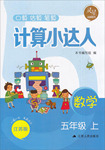题目内容
单词填空。根据首字母或汉语提示填写单词,注意其正确形式。
1.However.the southern part of Ireland was ________(不愿意的)and broke away to form its own government.
2.I have to remind myself ________(不断地) that I’m really in AD3008.
3.John Snow wanted to face the c_______(挑战)and solve this problem.
4.The Christian Church r_______ his theory ,saying it was against God’s idea.
5.It looked_______(辉煌的)when first built.
6.He slowed down the bleeding by a________ pressure to the wounds.
7.Last of all ,the chief editor read it and a________(批准) it.
8.You have three layers of skin which act as a barrier against disease, p_________ and the sun’s harmful rays.
9.At first, my new surroundings were difficult to t________(忍受).
10.Have you ever had a case where someone a_________your journalists of getting the wrong end of the stick.
1.unwilling
2.constantly
3.challenge
4.rejected
5.splendid
6.applying
7.approved
8.poisons
9.tolerate
10.accused
【解析】
1.
2.
3. Snow想要面对挑战并解决这个问题。定冠词the修饰名词表示特指,结合后面的this problem,故应填单数challenge。
4. was可知,动词用一般过去式。故填rejected。
5.
6. to固定搭配,运用。故填applying。
7.
8. 毒药和太阳的有害射线的屏障。根据and连接并列成分,由disease, rays可知此处也应填名词,poison是可数名词,通常用复数,故填poisons。
9. difficult to do ,做……困难,故填tolerate。
10. sb of ,因某事而指责/控告某人,由于这个案例是发生在过去的,故用一般过去时态,故填accused。
考点:考查词汇拼写,语法形式,固定短语的掌握等。

 灵星计算小达人系列答案
灵星计算小达人系列答案